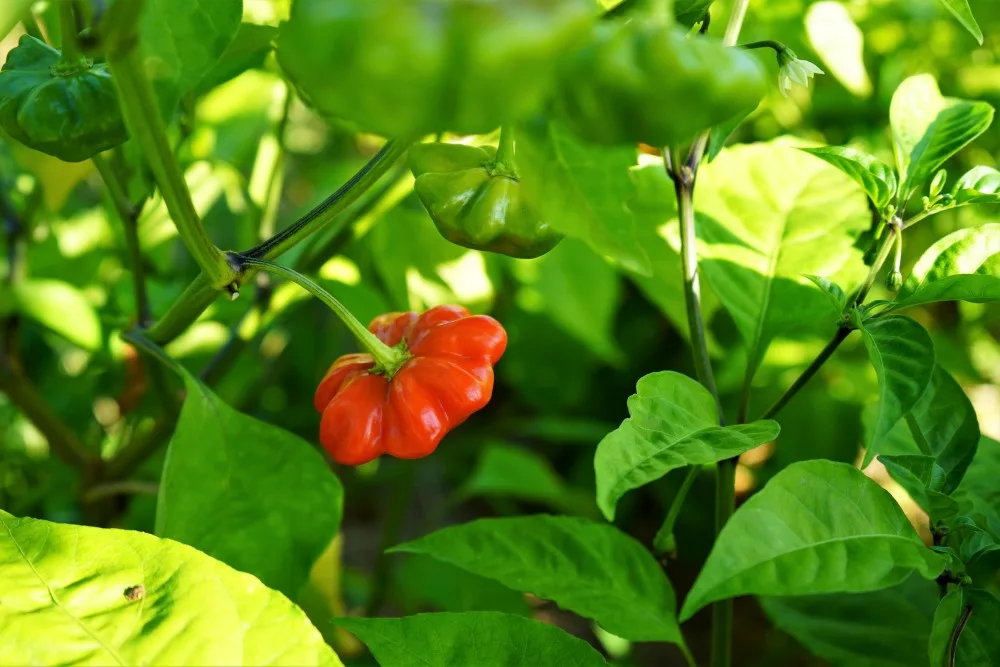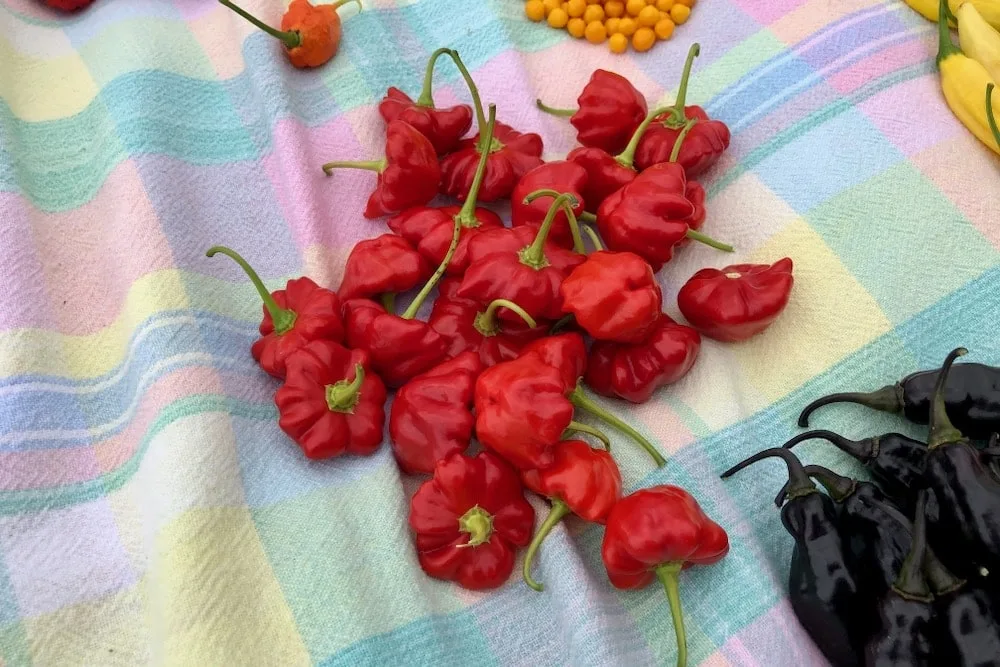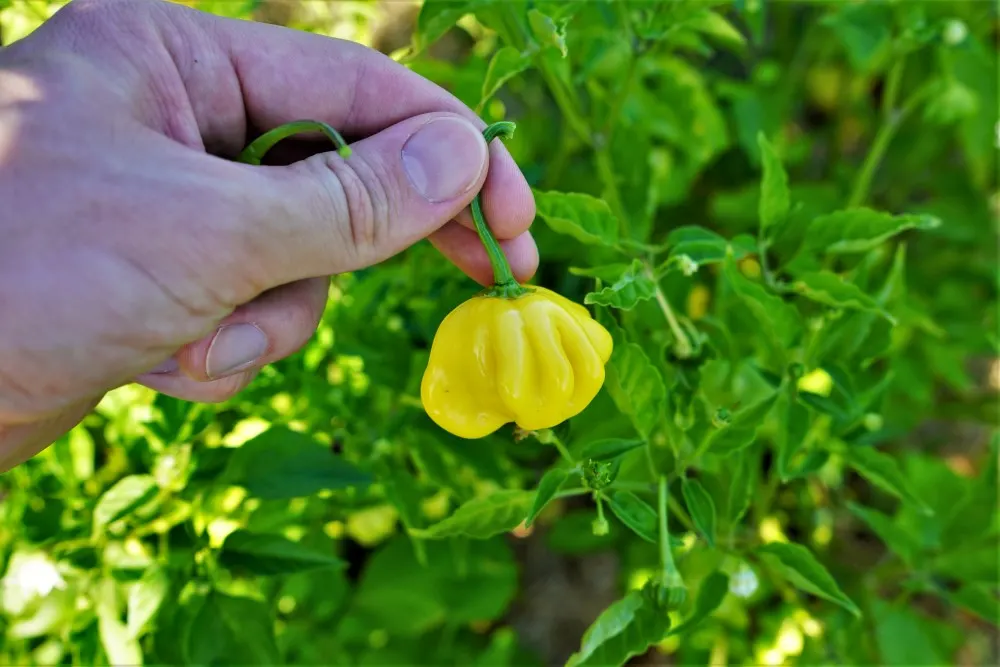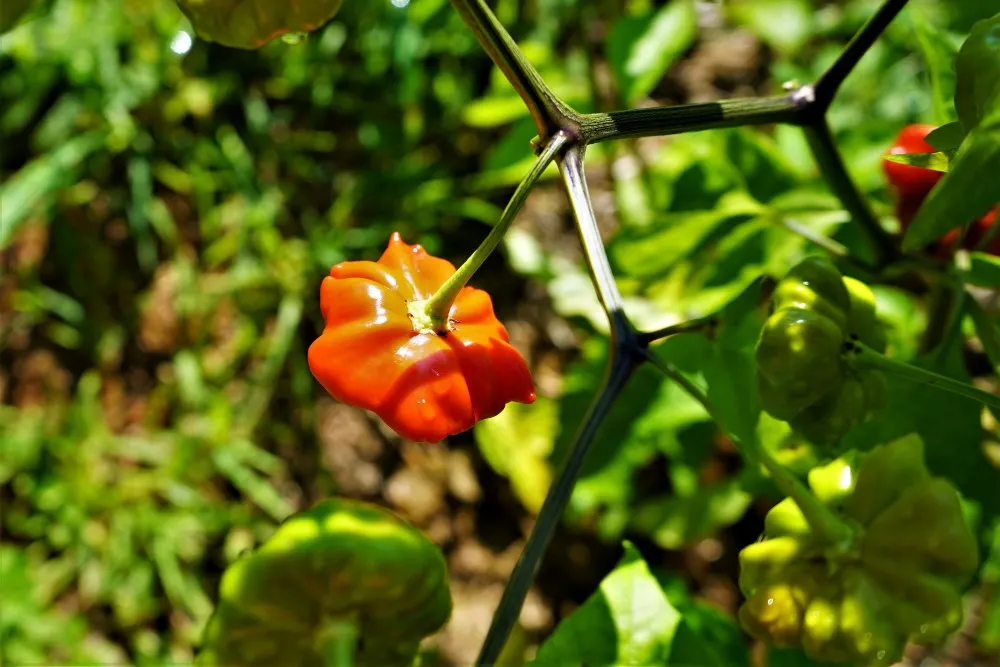There is a rich diversity of pepper varieties. Sweet, spicy, large, small, wrinkly, smooth, the list of traits seems endless! Among the most beautiful is the Brazilian starfish pepper.
These peppers almost look like candy, and are an absolute joy to grow in the garden. If you’re looking for something special to add to your home garden, this could be just the plant.

About the Brazilian Starfish Pepper
Hailing from the Capsicum baccatum species, the Brazilian starfish plant boasts an impressive size with high yields. The variety comes from, you guessed it, Brazil. This makes them hard to find in North America, but are more common in South America.
Brazilian starfish seeds: Bohica Pepper Hut or Etsy
The red starfish-shaped pods are between 1″-1.75″ in diameter, and just 0.5-0.75″ thick. This medium to small size leads to higher yields, with individual plants producing dozens of ripe pods each season. One of our in-ground plants produced about 50 peppers here in New England.

As is the case with all C. baccatum plants, the flowers are white with yellowish spots on the corolla. If you’re looking to branch out away from the jalapeños and bell peppers, this with surely bring some unique characteristics to your garden.
Brazilian Starfish Yellow
As far as I know, there is just one other Brazilian starfish pepper type, the Brazilian starfish yellow. It has a similar appearance, only yellow in color.

The pale yellow pods from this plant were more tricky to know when to pick, as the pale yellow color would change slowly. The peppers seemed to be slightly thicker, with a similar diameter. They also tasted a bit less spicy.
Get seeds for the yellow starfish here.
Brazilian Starfish Scoville Scale (Heat)
The Brazilian starfish is a spicy pepper, but definitely not too intimidating. The heat is medium, and is concentrated in the pepper’s placenta (the spongey membrane that holds the seeds).
Simply put, the Brazilian starfish pepper has a Scoville rating between 15,000-20,000 SHUs. This places it around the same level as a serrano pepper for spiciness.
Most baccatum species peppers do not have intense heat (like those in the C. chinense species). This makes starfish peppers highly usable in the kitchen. They won’t overpower your dinner like a ghost pepper might.
Brazilian Starfish Pepper Flavor
When it comes to flavor, the Brazilian starfish is a bit underwhelming. In my opinion, the starfish tastes similar to a red bell pepper, but with a touch of smokey heat. Above anything, they are sweet and slightly fruity.
The pepper walls are thicker than most peppers of this size. The red color also means high nutrient content, as the red pigment in peppers comes from beta carotene (Vitamin A).
If you’re looking for ways to use your starfish peppers, try chopping and cooking them with fried rice, chili, soup, salsa, or pickled. However, my favorite way to use baccatum peppers is to make a fruity dried powder.
Grow Brazilian Starfish Peppers
If you want to get your hands on some of these special peppers, you’ll probably need to grow them yourself. Thankfully, this isn’t too difficult – Learn how to grow peppers from seed here.

Baccatum species peppers generally have one drawback – they have a longer growing period. This means that starting indoors from seed is required for most climates.
The plant size can range from 2 feet to over 6 feet tall depending on your season’s length and the growing conditions. Ideal conditions are full-sun (6+ hours of direct sun daily), 70-80°F (21-27°C), and rich, well-draining soil.
Brazilian starfish peppers can start by growing upwards, but eventually hang down like a pendant. This just adds to their overall quirky growth habit.
For all peppers, we recommend amending with an all purpose fertilizer early in the season to promote leafy growth. Then, around mid season, cut back nitrogen to allow the plant to fruit.
Read Next:
The Brazilian starfish may just be the perfect pepper to get you interested in growing more rare varieties. Instead of growing serranos, maybe try these next season!


Eddie Munoz
Sunday 31st of December 2023
Do you know of the Aji Cachucha, a variety popular in the carribean?.
I have purchased them twice but the seeds where not what was advertised.
Joel
Tuesday 1st of August 2023
Have 2 one at 6foot and other 3foot due to accidental topping resulting in better side shoots.still no buds and it's 1August started in January,looking forward to seeing the fruit grow
James
Wednesday 24th of May 2023
I've grew these last year and loved them! Made a couple hot sauces from them as well as sweet pickled some. I'm planning to almost exclusively use them for sweet pickles this year as they were the best for it out of the varieties I grew. My plants were a bit tight on soil, being in 2 gal pots, but still reached over 5 feet tall from soil height. I don't ever see me not growing these. Highly recommended!
peppergeek
Thursday 25th of May 2023
Very nice, thanks for sharing! They're impressive plants and such beauties. Maybe we'll grow again in the future to try them pickled.
donald boots
Wednesday 24th of May 2023
just wondering what you do with tons of your different peppers
peppergeek
Thursday 25th of May 2023
We tinker, make a lot of powder, hot sauce, fermentations, pickles, frozen, and cooked/eaten fresh
David Niemi
Monday 4th of October 2021
I've been growing Brazilian Starfish Red for 2 years, and have one 8' tall this year. I think "Brazilian Starship" would have been a better name...